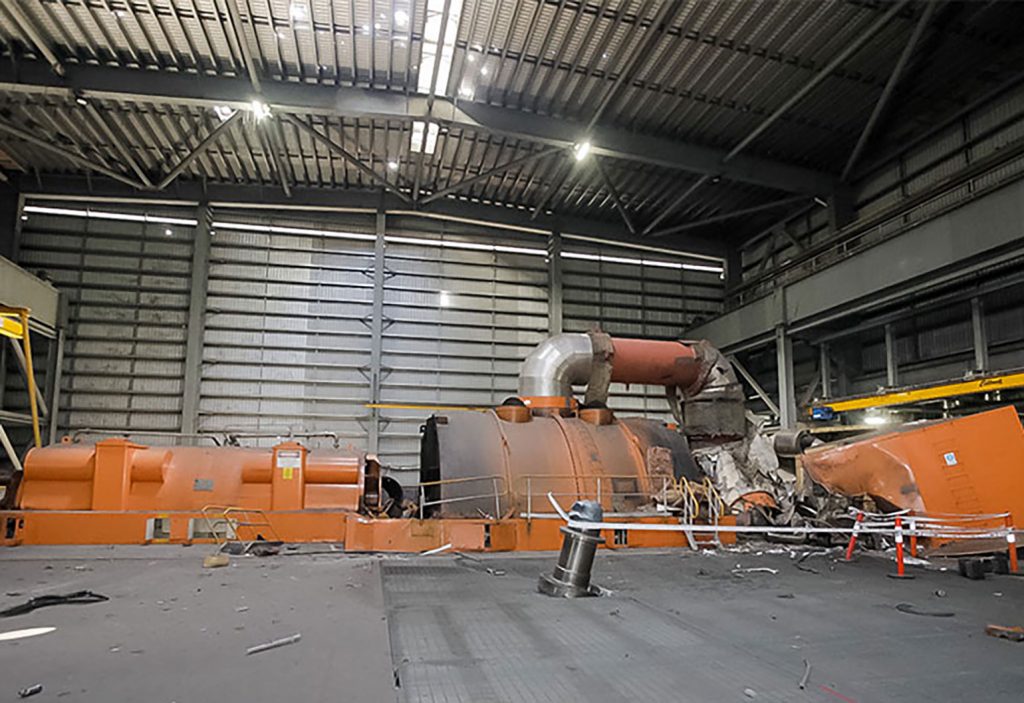Last month, a power station fire in Queensland left 400,000 households and businesses without power. create spoke to power systems engineering specialist and Engineers Australia Fellow Professor Tapan Saha FIEAust about the incident, and how we can work towards a sustainable, reliable national grid.
On 25 May, a fire in one of the turbine halls of the 1.525 GW coal-fired Callide Power Station in Biloela, Central Queensland tripped safety mechanisms that took three generating units offline. The incident also tripped a number of transmission lines.
According to Saha, who is based at University of Queensland, this reduced generation capacity in the state by almost 3 GW, and caused power supply and demand to go out of balance.
“There was no other choice to reduce the power used by customers to reduce load,” he said.
Callide Power Station has two sites: Callide B and Callide C. The fire was in Callide Unit C4, and it is not expected to return to service for a year. The two units at Callide B are expected to be back in operation by 11 and 21 June.
The Australian Energy Market Operator (AEMO) is investigating the incident, and last week released a preliminary report which recommends exploring mitigation measures for future operation, and future work to improve the operation and resilience of the National Electricity Market (NEM).
Saha stressed that a partisan debate between supporters of fossil fuel and renewable generation was not going to improve the reliability of the grid.
“These incidents are not frequent, but when they happen, people start pointing fingers,” he said
“It should be much more technically focused: what went wrong, and what can we do in the future to tackle such issues?”
Engineering the national grid
The NEM connects Queensland, Victoria, NSW, the ACT, SA and Tasmania. It supplies around 9 million customers, with transmission lines spanning 40,000 km.
“We have one of the longest AC networks in the world, and one of the most challenging as well,” Saha said.
While discussions about the future operation of the NEM will involve economists, policy makers and politicians, engineers need to be much more involved.
“At the end of the day, the grid is maintained by power systems engineers,” Saha said.
He added that these engineers had the skills and knowledge to operate the grid systems, integrate more renewables, and maintain the grid in decades to come. Engineers can also help build policy makers’ understanding of the grid, so they can design policies which will improve its operation.
For example, to keep the grid operating safely and securely, the frequency needs to remain stable at around 50 Hz. This is particularly important during events which cause significant generating capacity to separate from the grid, as an imbalance between supply and demand makes frequency unstable.
In the past this has proved challenging, as the output of existing coal- and gas-fired turbines was not adjusted locally, but controlled according to the centralised dispatch system, which approximates demand. In 2019, power systems engineers proposed a rule change to the Australian Energy Market Operator (AEMO) to address this issue. It was adopted in 2020.
According to Engineers Australia Fellow Dr Peter Sokolowski FIEAust CPEng, Co-Chair of Engineers Australia’s Electrical College, the grid frequency after the Callide shutdown did not appear to dip as much as somewhat comparable events in 2008 and 2018. While the in-depth investigation by AEMO and the energy company is ongoing, Sokolowski said that it appears the rule change is making a positive impact.
AEMO’s preliminary report states that the Queensland system frequency dropped slightly and recovered when Callide C4 stopped generating, and again when Callide C3 tripped. But the multiple transmission line and power station trips that followed caused the Queensland frequency to drop to 48.5 Hz, and the mainland NEM frequency to drop to 49.68 Hz.
Transition plan needed
Saha said the debate around the future of the grid should not be restricted to the effect of individual events.
“We should be looking at how we go into 2030, 2040 and 2050,” he explained, noting that Queensland was working towards a 50 per cent renewable energy target by 2030. Currently, around 80 per cent of Queensland’s power comes from fossil fuel generation.
“We need a lot of innovation to make the grid more sustainable and reliable 24/7,” he added.
Key challenges will be coordination between industry, universities and policy makers, and sufficient funding to prepare the grid to reduce emissions while maintaining reliability.
“There is a great engineering workforce in Australia, but I see a lack of coordination and slim funding opportunities,” Saha said.
Opportunities will include incorporating more storage such as batteries and pumped hydro, and upgrading the national grid to accommodate the increasing number of customers who both generate power (through rooftop solar) and consume it. Nationwide, there are now over 2.68 million rooftop solar systems — or about one in four households.
According to Grant Watt, Engineers Australia Senior Policy Advisor — Energy, Australia needs a sensible, comprehensive strategy to move from a centralised system of large fossil-fuel generation to smaller scale distributed generation supported by energy storage. And engineers need to be at the table.
“As the power network evolves with the growth of renewables, the system must be planned, analysed, designed, and operated as an engineering system,” Watt said.
Watt agreed with Saha that complex systems require both market forces and technical management that functions independently of the network operator and market influence.
“The market forces are very apparent in the current structure, but the independent technical voice is lacking,” he said.
